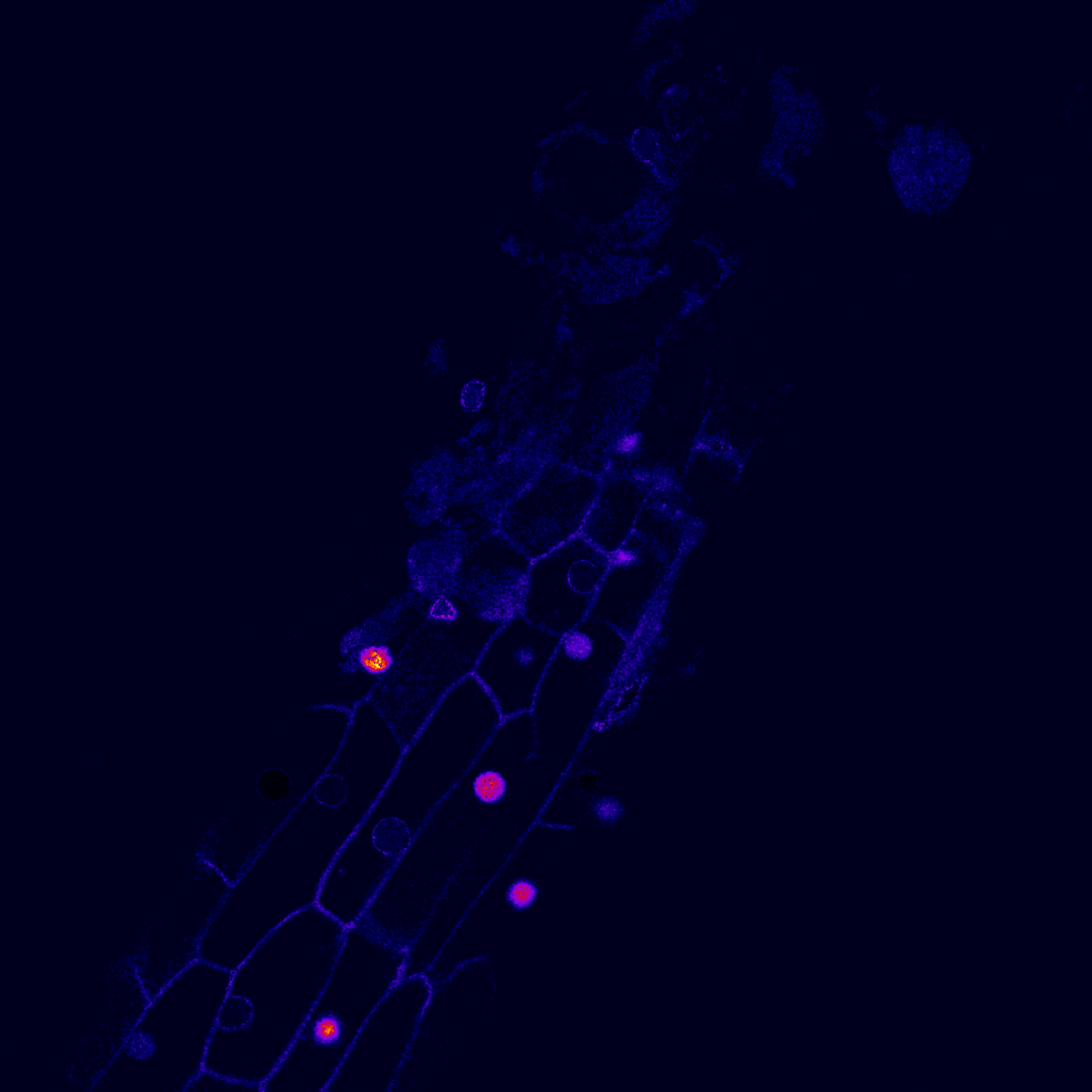Illustration (click to hide):

Project Description
Root growth in plants is regulated by the phytohormone auxin. Auxin forms a gradient in root tissues with a concentration maximum at the root tip. The gradient conveys positional information that regulate cell division and differentiation and thereby root growth. Fluorescent auxin sensors have been developed to make the auxin gradient visible in roots through microscopy. The R2D2 system is a highly sensitive ratiometric fluorescent marker for auxin quantification in planta. This marker consists of two types of fluorophores (Venus and tdTomato) fused to auxin-sensitive or insensitive amino-acid sequences, respectively. The Venus is fused to an auxin sensitive amino-acids sequence that targets the chimer to proteasome dependent degradation in the presence of high auxin concentrations. TdTomato is fused to a mutated version of the auxin sensitive amino-acid sequence, where the mutation abolishes any regulation through auxin. TdTomato is therefore expressed independently of auxin concentrations and is used for ratiometric quantification between Venus and TdTomato signal. We have expressed the R2D2 construct under a constitutive promoter in Populus roots. Our image analysis project consisted of developing an automatized method that allows to quantify Venus/tdTomato fluorescence recorded by confocal laser scanning microscopy in the nuclei of these Populus roots. From the quantified images a ratio needed to be calculated that is indicative for auxin concentrations in the respective cell. The auxin sensor will then be used to uncover how symbiosis formation of Populus roots with beneficial soil fungi alters root growth and development through root auxin signaling.
Reference: https://www.nature.com/articles/nmeth.3279?proof=t
Project Information
-
BIIF Principal Investigators
- Anna Klemm
External Authors
Judith Lundberg-Felten -
Date
2020-08-12 🠚 Current